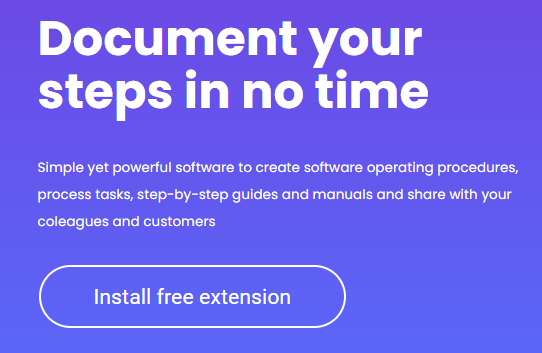
Online shopping is experiencing rapid growth due to changing consumer behavior caused by a worldwide pandemic and increased investments in advanced ecommerce marketing techniques.
In 2021, the total retail ecommerce sales in the US amounted to $870 billion, which exhibited a growth of 14.2% compared to the previous year and a remarkable increase of 50.5% when compared to 2019. The growth of market share and improvement in ecommerce sales can be achieved by brands with effective ecommerce marketing strategies. Nevertheless, it is important to be cognizant of the challenges that may arise.
Ecommerce marketing challenges
The battle between Google and Amazon is ongoing as both companies strive to dominate the ecommerce industry.
Furthermore, businesses that possess a successful SEO marketing strategy have a reduced barrier to entry. In nearly every retail sector, including eyewear, mattresses, and skincare, disruptors and online publishers have gradually captured a portion of the market.
The availability of rental and subscription models also allows many new players to garner a larger portion of the market. This is evident from Rent the Runway, which is valued at $800 million in the market. To swiftly and effortlessly establish an online store, businesses can utilize ecommerce platforms such as Shopify, WooCommerce, and BigCommerce. Moreover, online marketplaces like eBay facilitate the selling and reselling of personal belongings for individuals.
Due to an abundance of competition, the online ecommerce industry has become increasingly challenging for established businesses to distinguish themselves.
Best ecommerce marketing strategies
Next, we will discuss effective ecommerce marketing strategies that have the potential to greatly enhance your sales and attract a multitude of new customers. The topics covered will include various marketing channels such as search engine optimization and email marketing, among others.
Having a well-defined ecommerce marketing plan will enable you to effectively surpass competitors, regardless if they are traditional rivals, disruptors, subscription-based providers, rental services, alternative retail models, or any other type of competition.
1. Optimize your ecommerce website with SEO
Optimizing your website for organic search traffic is one of the most effective strategies in ecommerce marketing to stimulate growth. When people search for products on the internet, they usually rely on Google.
When examining individuals who search for a product without a particular brand in their thoughts (the group most open to discovering brands and their substitutes), the percentage of those who initiate their searches through Google rises.
To ensure your brand reaches all online shoppers, what you need is a thorough ecommerce SEO strategy.
One of our ecommerce clients experienced the effectiveness of SEO as a marketing strategy for their business. At launch, they had no traffic, but within 15 months, their monthly organic traffic increased to over 1,532,000. As a result, the brand’s valuation has now surpassed $1.5 billion.
Investments in enterprise-level SEO, unlike PPC, Adwords, and Google Shopping, have a compounding effect over time. This means that instead of directing traffic to a single page, multiple landing pages throughout your website experience the overall boost.
Some quick tips from our SEO checklist are provided below.
- Ensure all important pages are indexed by Google.
- Build a logical website architecture that’s three clicks deep.
- Improve page load time.
- Do keyword research and align content with search intent.
- Address duplicate content.
- Implement structured data.
- Ensure all pages are mobile-friendly.
- Fix broken links.
- Use image alt text
2. Optimize your category pages
Besides optimizing your website overall, it is crucial to optimize your category pages too, especially in the case of ecommerce. Your category pages provide a chance to target commonly searched terms with a considerable search volume, and as such, need to be carefully optimized for these terms.
To achieve this, the first step is to create distinct category pages that are easily locatable. Avoid merging several categories into a single page and refrain from producing category pages that have comparable or duplicate content.
When creating URLs, use concise, keyword-rich links that include subcategory directories. Optimize your page titles and meta descriptions with relevant keywords for better visibility in Google search results. However, it is equally important to write compelling titles and descriptions that entice users to click on your links from the SERPs.
To ensure a logical thought process, rephrase the following text while preserving its meaning: Use only one H1 tag per page and appropriately incorporate internal links. Additionally, ensure that your category pages contain substantial and pertinent content rather than solely featuring products. If your goal is to improve search engine ranking for relevant keywords, integrating top-notch content into your category pages is a prudent strategy.
To gain a thorough understanding of optimizing category pages, we recommend reading our post on category page optimization, which provides a detailed walkthrough.
3. Optimize your product pages
In order to effectively target all stages of the purchasing process, it is necessary for ecommerce marketing strategies to include the final stage as well. Therefore, it is crucial to optimize your product pages in order to attract customers who are already familiar with the product and are prepared to make a final decision.
Here are some important points from our post on ecommerce product page SEO. For a thorough guide, refer to our article.
- Use SEO-friendly URLs that contain the primary keyword.
- Write title tags that are both SEO-friendly and enticing to consumers.
- Write compelling meta descriptions that contain your keyword.
- Use keywords in H1 tags for both website visitors and search engines.
- Write unique product descriptions.
- Craft content that resonates with your target personas.
- Avoid duplicate content.
- Use high quality product images with proper alt tags.
- Offer similar product suggestions.
- Include product reviews or testimonials.
- Ensure pages load quickly.
- Use structured data to capture rich snippets.
- Optimize for mobile devices
4. Optimize for voice search
Due to the introduction of Siri, the usage of voice search has increased significantly. It is predicted that voice search will contribute to an enormous $40 billion in retail sales in the United States and UK by 2022. Therefore, in order to benefit from this expanding ecommerce sector, it is crucial to optimize your website for voice search.
The following are voice search SEO tactics that are both simple and effective.
- Create short, succinct answers to questions.
- Use conversational, long-tail keywords that reflect how people actually talk.
- Keep content simple and complicated words that confuse voice assistants.
- Focus on implementing page speed improvements. Voice search is like a conversation, so your pages must be quick or Google won’t select them.
5. Define your target audience and market
Before you can find the appropriate voice, messaging, channels, and offers, it is necessary to have a clear understanding of your audience.
6. See what your competitors are doing
It is likely that some aspects of it are functioning properly, and there is no need to start from scratch. However, it is important to also identify areas that can be improved as this can give you a competitive edge.
7. Set targets based on benchmarks
Before you possess your own data, rely on industry benchmarks to form your projections, as they will provide guidance for your work.
8. Research marketing tools that can help you
There is a lot to ecommerce marketing that can seem overwhelming. However, there are affordable tools available to assist you in getting started with many of the mentioned tactics.
9. Add more marketing channels as you find your ground
After verifying that your initial marketing setup is successful, proceed to broaden your reach by incorporating additional channels and strategies. For instance, considering implementing a live chat feature once you have allocated a customer service representative.
10. Automate as much as possible
In order to scale, small businesses require a consistent flow of sales without manual intervention. The more tasks can be automated, the more advantageous it is. This is where marketing automation strategies such as sending large quantities of emails, utilizing automated workflows, receiving notifications, and evaluating lead scores prove to be useful.
11. Personalize your communication
Customized and relevant ads, emails, SMS, and live chat yield superior outcomes. Customers appreciate feeling understood rather than receiving a generic message.
12. Measure your ecommerce marketing results, refine and reuse what works
The only way to know if an ecommerce marketing strategy is working is to track the return on investment (ROI). The campaigns that don’t bring results are not worth wasting money on. For the ones that do work, try to use them for a bigger audience, rinse and repeat.
13. Build loyalty into your strategy
Customer loyalty has several positive effects, including increased profits, enhanced brand reputation, and attracting new customers through positive word-of-mouth. Furthermore, the long-term impact of customer loyalty emphasizes the importance of initiating efforts to cultivate it as soon as feasible. Utilizing loyalty tiers, automations, and behavior insights from CRM systems can assist in achieving this goal.
14. Focus on profitability, not just sales
If you continuously incur expenses to acquire new customers, it can negatively impact your profits. One-time sales end up being costlier for you due to advertising costs, as well as a higher number of returns and exchanges (as new customers may be unsure of their sizes, etc.). On the other hand, encouraging repeat sales from existing customers is a more cost-effective approach.
15. Offer a loyalty program
The loyalty program is the final ecommerce marketing strategy in my list. It is more cost-effective to retain existing customers than to build brand awareness and acquire new ones. Additionally, even a slight increase of 5% in loyalty can result in a considerable boost in profits.
The power of a post-purchase loyalty program is exemplified by Amazon Prime. Prime shoppers spend, on average, 133% more annually on Amazon compared to non-Prime shoppers. Moreover, over 45% of Prime members make at least one purchase on Amazon per week.
By creating a program that incentivizes your most faithful customers, you can ensure their continuous return and consequently enhance your Customer Lifetime Value, which ultimately benefits your entire business.


